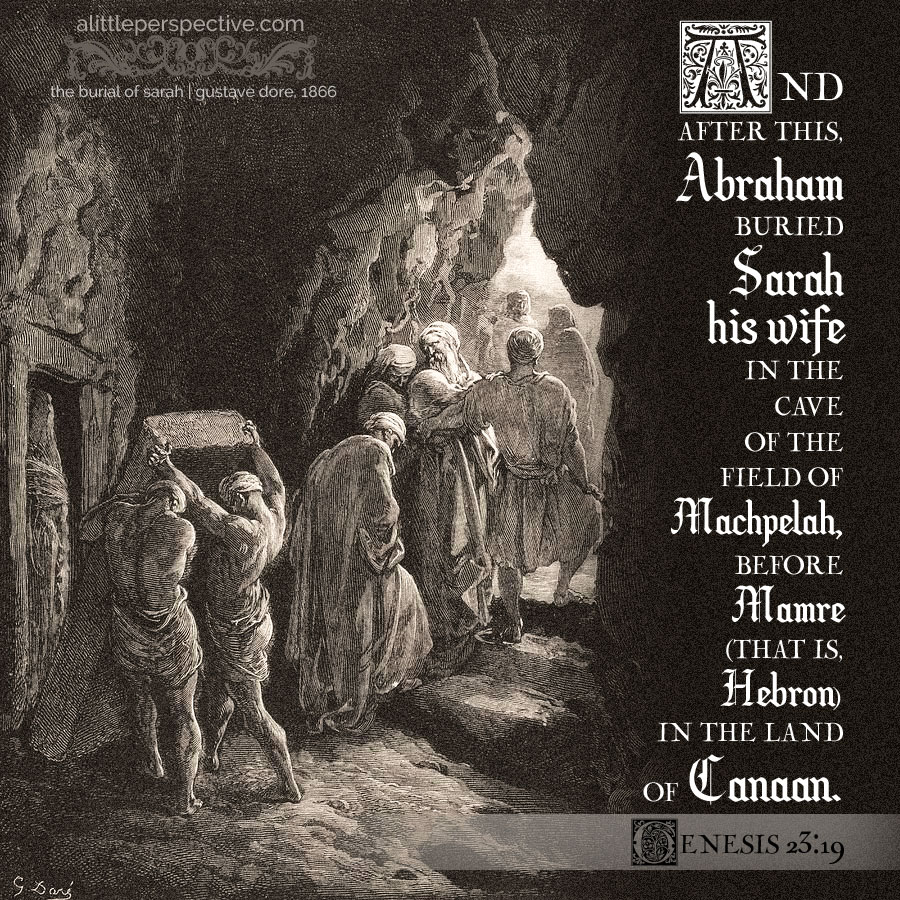Read Genesis 23 at Bible Gateway.
Hebrew paragraph division
Gen 23:1-20 {s} Heth gives Abraham a possession in Canaan
Original Hebrew
And Abraham rose up from before his dead, and spoke to the children of Heth, saying: “I am a stranger and a sojourner with you: give me a possession of a burying-place with you, that I may bury my dead out of my sight.”
stranger is Strong’s H1616, ger, from Strong’s H1481, guwr, a primitive root meaning “to turn aside from the way, to tarry.” The ancient Hebrew pictographs are the gimel + vav + resh:
gimel = the foot, thus foot, walk, gather
vav = the tent peg, thus add, secure, hook
resh = the head of man, thus head, first, top, beginning, man
The story the ancient pictographs are telling is of a walking (gimel) man (resh), i.e., a traveler, not a resident. The addition of the vav is interesting. It is not needed in order to convey the meaning of a traveler, a non-resident, an alien. But it provides the additional detail of security. A tent peg, after all, is that which secures the tent to the ground. The full picture of ger, then is of a secure (vetted?) stranger, as opposed to a spy or a criminal.
sojourner is Strong’s H8453, toshav, from Strong’s H3427, yashav, a primitive root meaning “to sit down.” The ancient Hebrew pictographs are the yud + shin + bet:
yud = the closed hand, thus work, throw, worship
shin = two front teeth, thus sharp, press, eat, two, again
bet = the house, thus house, household, family, in, within
The story the ancient pictographs are telling is that when work (yud) is ended, we press (shin) into the house (bet), to sit down at the end of a day of labor. A sojourner is one who sits down among us. The Hebrew word “captive” is also from this same root, as a captive is one who sits down among us; i.e. abides with us, albeit forcibly.

















Leave a Reply